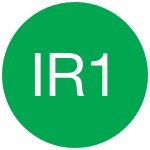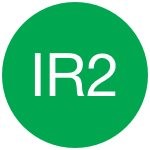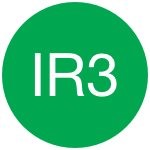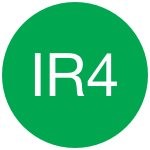After I-130 is Approved, What’s Next?
My I-130 petition is for:
Immediate Relative Inside the U.S. | Immediate Relative Outside the U.S. | Family Preference Outside the U.S.What Happens After I-130 Approval
Will they contact me once the petition is approved?
A U.S. citizen or permanent resident uses Form I-130, Petition for Alien Relative, to establish a qualifying relationship with a foreign national relative. The petition also communicates the intention to help that person obtain a green card in the United States. So what exactly happens after I-130 is approved? What happens next?
An approved Form I-130 is good news, but it’s only the beginning of a process that requires several forms to be filed with U.S. Citizenship and Immigration Services (USCIS) and/or the U.S. Department of State. Unfortunately, an approved I-130 petition does not, by itself, give you permission to come to, or remain in, the United States. The approval of the I-130 petition is a prerequisite to filing an application for a green card (lawful permanent residence).
First, to understand what happens after I-130 is approved, it’s important to know the type of qualifying relationship you have with the U.S. petitioner because it affects your wait time. This should be simple because it’s the basis of your I-130 petition.
You are in an Immediate Relative category if you have one of the following relationships:

Spouse of a U.S. citizen

Unmarried child (under 21 years of age) of a U.S. citizen

Orphan adopted abroad by a U.S. citizen

Orphan to be adopted in the United States by a U.S. citizen

Parent of a U.S. citizen (who is at least 21 years old)
You are in a Family Preference category if you have one of the following relationships:

Unmarried, adult son or daughter (age 21 or over) of a U.S. citizen

Spouse or unmarried child (under age 21) of a permanent resident

Unmarried adult son or daughter of a permanent resident

Married son or daughter (any age) of a U.S. citizen

Brother or sister of a U.S. citizen (who is at least 21 years old)
Upon approving the I-130 petition, USCIS will mail the petitioner an I-797 approval notice. The next step depends on two important criteria: (1) if the immigrant is in an Immediate Relative or Family Preference Category and (2) if the immigrant is inside or outside the United States.
Immediate Relative Inside the United States
What does an immediate relative do after Form I-130 approval?
Adjustment of Status After I-130 is Approved
A foreign national that wants to change their nonimmigrant status to permanent resident status (green card holder) uses a process called adjustment of status. The foreign national would file Form I-485, Application to Register Permanent Residence or Adjust Status, as the primary form in an adjustment of status application package. Although USCIS will consider additional factors before approving an adjustment application, the three fundamental requirements to adjust status require that you must:
- Be physically present in the United States;
- Have an immigrant visa immediately available; and
- Have a lawful entry to the United States.
Lawful entry means that immigration officials admitted or paroled you into the United States. For most people, this generally means that you entered the United States with valid documentation and made face to face contact with a U.S. immigration officer and that officer acknowledged your entry to the United States. If you entered with a valid visa, but that visa has since expired, you still had a lawful entry. For other individuals that have an unlawful entry but otherwise meet the requirements to adjust status, an I-601A waiver may be available. For waiver cases, the guidance of an immigration attorney is highly recommended.
Preparing the Adjustment Package
If you are in the United States after USCIS approves the I-130 petition, you’ll probably want to file an adjustment of status package. The adjustment package generally includes several mandatory USCIS forms and some optional forms. It may seem a bit overwhelming, but most people with straightforward cases can prepare the application package without the assistance of an attorney.
By accurately preparing these forms, you will greatly increase your chances of having your case processed quickly. As mentioned, Form I-485 is the primary application in the package, but several other USCIS forms may need to be included:
- I-485, Application to Register Permanent Residence or Adjust Status
This is a required form used to claim the immigrant visa and adjust status to a lawful permanent resident. - I-864, Affidavit of Support
This is a required form used to show that the applicant has adequate means of financial support from a sponsor. - I-693, Report of Medical Examination and Vaccination Record
This is a required form used to establish that the applicant is not inadmissible on public health grounds. - I-765, Application for Employment Authorization
This is an optional form used to request permission to work in the United States while waiting for the green card. - I-131, Application for Travel Document
This is an optional form used to request an advance parole travel document, a necessary document to re-enter the U.S.
Supporting Documents
In addition to the forms listed above, the applicant must submit USCIS fees and supporting documentation. This list of items that must be submitted varies based on your specific situation and answers on the forms.
Refer to the directions for each USCIS form or the simplified set of instructions when you prepare the package on CitizenPath. In addition to your prepared form, CitizenPath provides you with a set of personalized filing instructions. Our filing instructions are customized to your answers in the application so you know what to do for your specific situation. The filing instructions provide detailed directions on supporting documents, how to organize your application, and where to mail it. To see an overview of typical forms and fees for your situation, review the adjustment of status fee page.
Immediate Relative Outside the United States
What does an immediate relative do after Form I-130 approval?
After the approval of an I-130 petition, USCIS will send your file to the National Visa Center (NVC). And the NVC will eventually coordinate the transfer of your case to the U.S. consulate in the country where you reside. This is known as consular processing. The NVC will notify you when it is time to begin the next steps in processing your approved petition. You will likely go through these steps:
1 | Choose an AgentFirst, they will ask you to complete Form DS-261 to assign an agent. The agent is the person that will also receive information about your case. You may be the agent, or you may select a family member or other trusted person to be your agent. |
2 | Pay FeesYou will pay the Immigrant Visa Application Processing fee and Affidavit of Support fee. Both are required DOS fees. Each person who is immigrating will have separate fees. |
3 | Submit Immigrant Visa ApplicationYou won't be able to access the Immigrant Visa Application (Form DS-260) until the NVC has processed your payment. In some cases, this can take up to one week. The applicant must prepare and submit the DS-260 visa application through the Department of State website. |
4 | Submit Required Documents to NVCThe NVC will require you to submit various civil records and an Form I-864 Affidavit of Support with all financial supporting documents. Learn how CitizenPath can help you with your Affidavit of Support Package. |
You can learn more about the consular process by visiting the Department of State website. Expect this part of the process to take approximately 6 to 10 weeks if there is not significant backlog.
Once the NVC is satisfied that you have correctly submitted the required documents and have paid the fees, you'll be able to schedule an interview at the U.S. embassy or consulate. All applicants must also undergo a medical examination performed by an authorized physician and obtain certain vaccinations before the government will issue the visa.
Family Preference Outside the United States
What does a preference category relative do after Form I-130 is approved?
In most cases, Family Preference applicants use consular processing to apply for a green card. Due to the limited number of visas available to immigrants in these categories, the wait for an interview can add up to several years. Your I-130 file will remain with the NVC until the priority date becomes current.
Priority Date
Your Priority Date is the date your I-130 petition was filed. So regardless of how long it takes to approve your I-130 petition, your Priority Date is set on the day that USCIS accepts the petition. Your Priority Date serves as your “place in line” when a limited number of visas are available. See how the visa bulletin works to keep an eye on dates as they become current. If your Priority Date is not "current," there is a wait associated with your green card.
Limited Number of Visas
The Family Preference category has a cap on the total number of immigrant visas that can be issued each year. The law currently limits a total of 226,000 family-based green cards annually. However, COVID-19 pandemic and administrative policies have restricted immigration recently. The result has been fewer green cards issued and and increasing backlog. In fiscal year 2021, the U.S. government only issued 84,570 immigrant visas in the following categories:
F1: Unmarried Adult Children of U.S. Citizens
F2A: SPOUSES AND MINOR CHILDREN OF LPRS
F2B: UNMARRIED ADULT CHILDREN OF LPRS
F3: MARRIED ADULT CHILDREN OF U.S. CITIZENS
F4: BROTHERS AND SISTERS OF U.S. CITIZENS
Complicating matters further, the wait can be extended by country limits. The law puts a cap on the number of immigrants that can come to the United States from any one country. Currently, no more than seven percent of the total amount of people immigrating to the United States in a single fiscal year can come from a single country. Most countries are not affected by this cap. But people from countries with high levels of immigration to the United States, such as India, Mexico and the Philippines, will experience this cap that can make the wait for a green card much longer. For a more comprehensive overview, see how the United States immigration system works.
This process may take just a few months for the F2A category or several years for the F4 category. When the visa number becomes available, the National Visa Center informs the foreign national to proceed with consular processing (or adjustment of status if already inside the United States).
What happens after I-130 is approved depends on numerous factors. Immediate Relatives will be given priority because there is no limit on the number of immigrant visas that can issued each year to this category. On the other hand, individuals in the Family Preference category will generally wait many months, and often several years, before an immigrant visa number is available. A determination must be made if the immigrant will adjust status inside the United States or will submit an immigrant visa application through consular processing at a U.S. embassy or consulate. All of these factors determine the steps that happen after I-130 is approved.











